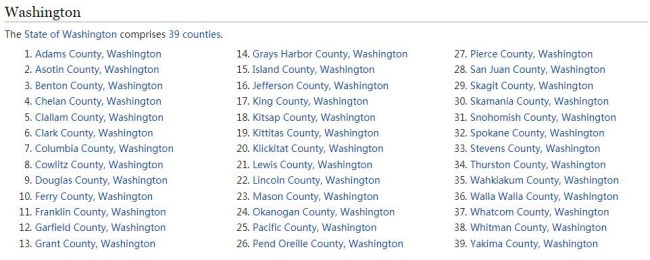Geography of Asotin County, Washington
Asotin County, situated in the southeastern corner of the state of Washington, is a region characterized by its rugged landscapes, winding rivers, and diverse ecosystems. Covering an area of approximately 641 square miles, Asotin County is nestled within the Blue Mountains and serves as a rural community with a rich history and natural beauty. Its geography, encompassing its climate, rivers, lakes, and other features, significantly influences the local environment and shapes the lives of its residents. Check Foodezine.com to learn more.
Topography and Landforms
Asotin County’s topography is varied, featuring steep canyons, rolling hills, and forested mountains. The county is located within the Blue Mountains, part of the larger Columbia Plateau physiographic province, known for its rugged terrain and scenic vistas.
One notable landform in Asotin County is Hells Canyon, the deepest river gorge in North America, which forms the boundary between Washington and Idaho. The canyon, carved by the Snake River, reaches depths of over 7,900 feet and offers dramatic scenery and opportunities for outdoor recreation.
In addition to Hells Canyon, Asotin County is also home to several other prominent features, including the Asotin Creek Canyon and the Grande Ronde River Valley. These valleys and canyons provide habitat for a variety of plant and animal species and serve as important natural corridors for wildlife migration.
Climate
Asotin County experiences a semi-arid climate, characterized by hot, dry summers and cold, snowy winters. The region falls within the rain shadow of the Cascade Mountains, resulting in lower precipitation and higher temperatures compared to other parts of Washington.
Summer temperatures in Asotin County can be quite hot, with average highs reaching the upper 80s°F to lower 90s°F (around 31-34°C). Heatwaves are common during the summer months, with temperatures occasionally exceeding 100°F (38°C). The arid conditions and high temperatures make water conservation and heat safety important considerations for residents.
Winter temperatures in Asotin County are cold, with average lows dipping below freezing. Snowfall is relatively light compared to other parts of Washington, but occasional winter storms may bring significant accumulations to higher elevations. The snow-covered landscape adds a picturesque touch to the rugged surroundings and provides opportunities for winter sports such as skiing and snowshoeing.
Spring and fall serve as transitional seasons, with milder temperatures and fluctuating weather patterns. These seasons are characterized by blooming wildflowers, budding foliage, and occasional rain showers as the region transitions between the extremes of summer and winter.
Rivers and Lakes
Asotin County is intersected by several rivers and streams, which flow through its mountainous and valley areas and contribute to the region’s hydrology. The most prominent river in Asotin County is the Snake River, which flows from east to west through the southern part of the county and provides habitat for a variety of fish and wildlife.
In addition to the Snake River, Asotin County is also home to several smaller rivers and creeks, including Asotin Creek and the Grande Ronde River. These waterways meander through the county’s interior and provide opportunities for fishing, boating, and other water-based activities.
While natural lakes are scarce in Asotin County, the region is home to several man-made reservoirs and impoundments, including Lower Granite Lake and Hells Canyon Reservoir. These reservoirs provide opportunities for recreation and water storage amid the arid landscape.
Vegetation and Wildlife
The natural vegetation of Asotin County consists mainly of grasslands, shrublands, and coniferous forests, which provide habitat for a variety of plant and animal species. Common tree species found in the area include pine, fir, juniper, and oak, which provide food and shelter for a variety of wildlife species.
The county’s diverse habitats support a wide range of wildlife, including mule deer, elk, bighorn sheep, and a variety of bird species. These animals rely on the diverse habitat for food, shelter, and reproduction, making the preservation of natural areas critical for their survival.
In addition to terrestrial habitats, Asotin County also boasts rich aquatic ecosystems, with its rivers, streams, and lakes supporting a variety of fish, amphibians, and waterfowl. Anglers can find a wealth of fish species in the county’s waterways, including trout, bass, and salmon, making fishing a popular pastime for residents and visitors alike.
Human Impact and Land Use
Human activity has significantly altered the landscape of Asotin County over the years, particularly through agriculture, logging, and outdoor recreation. The fertile soils of the river valleys support a thriving agricultural industry, with crops such as wheat, barley, and hay being major contributors to the local economy.
Logging has historically been an important economic activity in Asotin County, with timber harvested from the county’s forests used for lumber, paper, and other products. While logging practices have become more sustainable in recent years, the industry continues to play a role in shaping the county’s landscape and economy.
Outdoor recreation is also a significant driver of economic activity in Asotin County, with opportunities for hiking, camping, hunting, and fishing attracting visitors from near and far. The county’s numerous parks, trails, and wilderness areas provide opportunities for residents and visitors to enjoy the natural beauty of the region.
Asotin County, Washington, with its diverse geography, semi-arid climate, and abundant natural resources, offers a unique and scenic environment for residents and visitors alike. From its rugged canyons and river valleys to its forested mountains and rolling hills, the county’s landscape provides a wealth of opportunities for outdoor recreation, wildlife viewing, and economic activity. As residents continue to steward the land and adapt to changing environmental conditions, they remain committed to preserving the beauty and vitality of Asotin County for future generations to enjoy.


